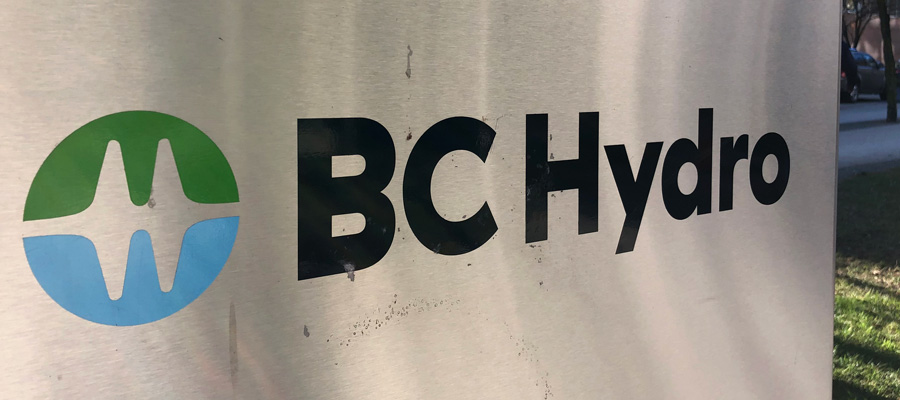Inside job: How BC Hydro customers wound up bankrolling private power companies

The chickens have finally come home to roost on the previous BC government’s private power giveaway. The just-released provincial report by Ken Davidson on the costs of BC Hydro’s power purchases is a damning indictment of its electricity policies—policies whose exorbitant and wholly unnecessary costs will saddle BC ratepayers with an enormous financial burden for decades into the future.
These policies constituted a deliberate and wanton disregard for the interests of BC Hydro customers and for the financial viability of the Crown Corporation itself.
The report indicates that under the BC Liberal government, BC Hydro entered into 105 contracts worth $47 billion in contractual commitments—which future ratepayers will be paying off over the next 30 to 60 years. Davidson calculates that this will cost the average ratepayer an extra $200 annually for at least two decades to come.
None of this should have happened.
For well over a decade, critics of this approach (myself among them) voiced their alarm at the enormous projected future costs of the government’s electricity policies. There was no shortage of competent financial analyses of the long-term consequences of these policies. But the government simply ignored the critics. And the private power corporations—the beneficiaries of the lucrative Hydro contracts—maligned the critics as economic illiterates, opponents of green energy, or ideologues committed to preventing the growth of private enterprise in BC. When disgruntled ratepayers attempted to launch a class action lawsuit to stop the giveaway to private developers, the government passed special legislation to stop it.
The government cast its energy polices as necessary to fulfil BC’s goal of expanding domestic production of renewable energy. Its communications strategy papered over the actual details while promoting it as environmentally responsible and economically sound. But the details were the opposite of what the government claimed.
The government made highly inflated projections of future energy requirements, then directed BC Hydro to purchase the energy needed to meet those projections from private power companies.
To justify purchasing large volumes of privately generated electricity, the provincial government needed to create the illusion of a future demand for it. This entailed making highly inflated projections of future energy requirements and then directing BC Hydro to purchase the energy needed to meet those projections. When the projections did not produce enough demand to satisfy the growing appetite of developers to sell more private power, the government mandated BC Hydro to incorporate a 3,000 GWh insurance reserve into its plans, increasing the volume of power it would have to purchase. And, by eliminating the use of the Burrard thermal plant (in Metro Vancouver) as a backup to provide limited amounts of energy during peak power periods, it further increased the volume of energy BC Hydro was directed to purchase.
This new energy would have to come from private sources, because the government implemented a policy that forbid BC Hydro from itself building any new small hydro or wind projects, even though it had already researched the best locations for them. The province justified this approach by saying that investors, not the public, would bear the risks of these projects. A competitive tender process would, it claimed, ensure that the price paid by BC Hydro for new energy would be competitive. But the government also stipulated that this new energy had to come from BC, effectively restricting the pool of bidders to investors in private power projects within BC. And, by requiring the Crown utility to meet its inflated targets for new energy purchases regardless of the cost, it guaranteed an expanding public market for privately produced energy.
The government also ensured that private investors would be able to utilize BC’s run-of-river resources for hydroelectricity, charging almost nothing for water licenses while keeping the water rental charge for small projects at a fraction of what BC Hydro paid the province. BC Hydro assisted these projects with extensions to its transmission lines so they could feed their energy into the grid.
Due to cuts in Environment Ministry staff, the province failed to monitor the construction of the numerous small run-of-river dams, which exposed aquatic life and fish stocks to damaging temperature and water flow changes. The environmental damage of new roads and power plants was also extensive and entirely unnecessary.
Similarly, the government transferred licenses of occupation for wind farm development to investors for virtually nothing, despite the fact that it was BC Hydro that had done the research on identifying the best locations for future wind energy development.
The Davidson report systematically documents the steps the government took to force BC Hydro to purchase large volumes of power that it did not need at prices three or four times more than the energy was worth.
One of the strengths of the Davidson report is that it systematically documents, in considerable detail, the steps the government took to force BC Hydro to purchase large volumes of power that it did not need at prices three or four times more than the energy was worth. Historical comparisons with prices at the Mid-C electricity trading hub south of the border underscore the excessively high prices BC Hydro was forced to pay for this power.
Worse, BC Hydro was buying the wrong kind of power at the wrong time of year. Run-of-river energy comes primarily during the spring freshet. But this is precisely the time that both the Peace and Columbia rivers also experience a surge in water levels. So there is normally a surplus of power during this period and Mid-C prices are low. However, run-of-river projects produce very little power in the fall and winter when BC most needs it. This is also the time when prices in the Pacific Northwest electricity market peak. Thus BC Hydro ended up paying premium prices for energy it did not need and often had to dump on the energy market at fire sale prices, with the ratepayers swallowing the losses.
The government further protected investors by locking in these high prices for specified volumes of electricity by having BC Hydro sign 30- to 60-year contracts. BC Hydro must take this power—and pay full price for it—regardless of whether it needs it, and regardless of what it otherwise might pay were it to purchase the energy on the international market. This arrangement effectively shifted future price risks to BC Hydro ratepayers with devastating financial consequences as the report documents.
Prices were also inflated by the fact that these were capital projects financed by borrowing. Private investors did not have the strong credit rating of BC Hydro, so the interest charges they had to pay on the money they borrowed were far higher than the Crown utility would have to pay for similar projects. This high interest premium was folded into the price that private investors charged to BC Hydro in their contracts.
This arrangement effectively shifted future price risks to BC Hydro ratepayers with devastating financial consequences. The public has received no assets for all the money expended.
The report also notes that $1.4 billion or 81 percent of the energy BC Hydro is currently purchasing now goes to out of province investors, with corresponding adverse impacts on local business activity, employment and provincial revenues. This was exactly the opposite of what the government promised when it claimed it was creating a BC-based private sector electricity industry.
Underlying this entire debacle is another major issue. Despite the billions of dollars now flowing into the coffers of out-of-province investors, the public has received no assets for all the money expended. The projects will remain the property of private investors permanently. Whatever revenue they may generate after the lucrative contracts with BC Hydro end will still flow into private pockets. In contrast, WAC Bennett’s public investments in the Crown utility in the 1960s and 1970s provided low cost power to ratepayers and a generous revenue stream to the government in the form of substantial dividends during the 1990s—money that was used to pay for schools, hospitals and other public services.
The previous government transformed BC Hydro into a collection agent for private power interests. It now functions by taking money from ratepayers and passing it through to the beneficiaries of the government’s private power agenda, an activity that will continue for generations to come.
WATCH: John Calvert’s 2012 lecture on the private power scandal
Topics: Climate change & energy policy, Privatization, P3s & public services, Transparency & accountability


